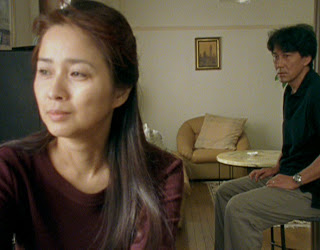When I was a kid racing home from school to watch Dark Shadows and staying up late on
Saturday night to watch Shock it to Me
and Scream In, our local
sci-fi/horror double feature in glorious black and white, I was as much a fan
of Alfred Hitchcock as I was of Lugosi and Karloff, and Christopher Lee and
Peter Cushing.
Television showings of Psycho
and The Birds were not as common as
Hammer Horror and Universal Monsters films. We had afternoon reruns of Alfred Hitchcock Presents, but at a
young age I had not yet developed a taste for psychological thrillers and
usually grew bored with the stories between Hitch’s on-screen appearances.
I can’t think of any other film director in my lifetime that
became such a public icon the way Hitchcock did. Everyone loved his movies,
from the romantic thrillers to the horror shows. Everyone recognized his face.
Many loved to imitate his voice.
It’s “the voice” that actors Anthony Hopkins in Hitchcock and Toby Jones in The Girl pull off with panache, and pull
us – somewhat – into the mind of the Master of the Macabre. I watched the two
films over two consecutive days, and am glad I did. Chronologically, The Girl is a continuation of Hitchcock and ultimately takes us
further into the mind of a genius but deeply disturbed artist.
I had previously read Donald Spoto’s biography, The Dark Side of Genius, as well as
Stephen Rebello’s Alfred Hitchcock and
the Making of Psycho. The Rebello book, chock full of trivia about the
making of one of the finest American horror films ever made, is the source
material for the film, Hitchcock.
From the search for the perfect vehicle for his next film to the notorious
moment when Hitchcock’s wife, Alma Revel, tells Hitch he can’t release Psycho as is….because Janet Leigh blinks
while laying murdered on the shower floor, Hitchcock
manages to touch all bases within a mere 98 minute running time.
Despite my personal annoyance with several shots where the
prosthetic chin is painfully obvious, I was sucked in by Hopkins ’ performance and frequently forgot I
wasn’t watching a documentary of the director appearing as himself. It was also
great fun to see the cast who portray the familiar participants in Psycho – Jessica Biel as Vera Miles, James
D’Arcy as Tony Perkins, a fabulously beautiful Scarlett Johansson as Janet
Leigh, Ralph Macchio in a cameo as screenwriter Joseph Stefano, and a terrific
supporting performance by Toni Collette as Hitch’s assistant, Peggy Robertson. Hopkins , of course, has
the juiciest lines in the movie, tossing off one macabre one-liner after
another which had the audience at my viewing tittering with laughter
throughout. Hitchcock gives us a
fiendishly entertaining portrait of the brilliant director as the loveable imp
we remember from television talk shows and his appearances as host of his own
TV series, Alfred Hitchcock Presents.
Despite its source material and marketing campaign, Hitchcock is ultimately a story about
Hitch’s relationship with wife Alma. In a way, so is The Girl, although in the second film, Alma takes a back seat to the director’s
obsession with creating the perfect blond movie star from scratch.
HBO’s offering, The
Girl, dares to go beneath the public persona and give us a portrait of a
genius with bizarre fetishes and dangerous sexual obsessions. Based on another
Spoto book, Spellbound by Beauty: Alfred
Hitchcock and His Leading Ladies, as well as the personal memories of star
‘Tippi’ Hedrin, The Girl focuses less
on the actual making of The Birds and
Marnie, instead placing the emphasis
on Hitchcock’s self-destructive obsessions. There are a few “behind the scenes”
type sequences including one highly amusing scene showing gull wranglers
chasing down stunt birds along the coast of Bodega Bay, providing levity to what is an
otherwise grim and often shocking film. Perhaps the most telling moment of just
how far Hitch would go with his malignant obsession and corruption of
directorial authority is the planned one-day shoot using mechanical birds (the
scene at the end of The Birds when
Melanie Daniels goes to the attic room of the Brenner farmhouse). Hitchcock actually
filmed the scene with live birds attacking the actress over and over…for a
period of five days. Understandably, Hedrin collapsed from exhaustion and was
hospitalized.
The Girl is
riveting, and despite the Mad Men-era
period detail, not a pretty film to watch. Toby Jones and Anthony Hopkins are
two very different actors but as with Hopkins ’
performance, I surrendered completely to Jones’ interpretation.
So, which is the better film? That’s a question I can’t
answer. As a lifelong fan and Hitchcock trivia nut, I’ll be buying both on DVD.
I will probably shelve them separately, however. Hitchcock will enjoy a place of honor next to Tim Burton’s Ed Wood. The Girl will be slid into place next to that other classic of
sexual fetishism, Blue Velvet.



















































